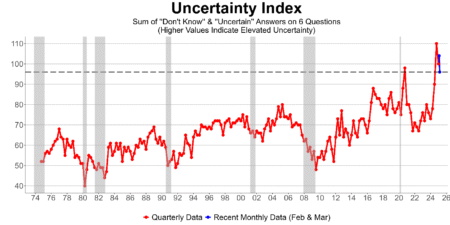Barry Marshall, People-Minded business and organizational strategist. Founding Partner of P5, a boutique management consultancy.
Spring is here, and many CEOs are facing a leadership crisis in the workplace. Recent studies show that almost 6 in 10 workers are interested in a new job or actively job hunting in 2025. Often, employees look for new jobs due to their experiences with poor management and organizational leadership. A talent exodus can result from a company’s failure to prioritize leadership development and accountability among its top leaders.
As a CEO or leader, now is the time to define and articulate your leadership competencies, create accountability around those definitions and determine how your organization will differentiate itself in this hiring market to retain your talented employees!
The Connection Between Leadership And Financial Outcomes
In today’s competitive landscape, good leadership is not just a nice-to-have—it’s a fundamental driver of financial outcomes and a key differentiator in the war for talent. The consequences of neglecting this leadership crisis are severe. A report published in 2020 found that “84% of American workers say poorly trained people managers create a lot of unnecessary work and stress.” This leadership deficit not only impacts employee sentiment but also directly affects your bottom line.
Leadership development is often relegated to the category of employee satisfaction, but the data shows a direct correlation to your business’s financial outcomes.
• McKinsey research shows those investing in both people and performance are 3.6 times more likely to be superstars than an average firm.
• A 2023 study found the average ROI for companies was $7 for every $1 spent on leadership development.
Leadership development and accountability must be a fundamental part of your business strategy for 2025 and beyond to maintain your financial goals.
Core Principles For Leadership Strategies
Here are three core principles to guide you through impactful changes to your leadership strategy this year:
1. Prioritize what matters.
To build a strong leadership culture, start by defining what great leadership means for your organization.
• Articulate your vision: Working with your executive team, clearly define what exceptional leadership looks like for your organization. What behaviors and qualities do you value most? What are you willing to be held accountable for personally?
• Identify key behaviors: Codify what specific, actionable behaviors such as effective communication, empathy and decision making skills look like. Create clear definitions you can leverage for measurable feedback and improvement.
• Involve employees: Leverage insight from across your organization in refining and expanding on your definitions and descriptions. This can take the form of surveys or round-table discussions that gather input and create buy-in across the organization.
2. Invest in what matters.
Leadership development begins at the top. As a CEO, you must do the following things exceptionally and consistently:
• Lead by example: Embody the leadership qualities you expect from others. A July 2024 poll by LinkedIn Market Research found that “75% of Gen Z workers and 77% of millennials say a bad boss would motivate them to look for a new job, compared to 68% of Gen Xers and 61% of baby boomers.”
• Develop yourself: As CEO, commit to your own leadership development plan. Create a personal leadership development plan that includes coaching, training, mentorship and peer accountability. Consistently share your goals and progress with your employees to model the importance of continual self-development.
• Develop your leaders: Allocate resources for leadership excellence at all levels. Work with your leadership team to create development plans that include training, mentorship and experiential learning opportunities. Have them share their commitments to change and grow with you and each other.
• Foster accountability: Establish peer learning groups where managers and leaders can teach each other good leadership practices and hold each other accountable.
3. Measure what matters.
Ensure that leadership development is not treated as a separate initiative but is fully integrated into your business strategy and operations. To ensure leadership development translates into tangible results:
• Set clear goals: Incorporate measurable leadership objectives into your organization’s OKRs and annual targets. Make these goals as specific and quantifiable as your financial and operational targets.
• Implement feedback systems: Establish regular leadership assessments through 360-degree reviews, skip-level meetings and employee surveys. Create multiple safe channels for employees to provide honest feedback about leadership performance. Make it clear that this feedback is heard, valued and acted on.
• Align incentives and performance: Tie your personal compensation and that of your team to measurable leadership competencies. Make leadership effectiveness a key factor in performance evaluations, promotions and compensation decisions. This sends a clear message that leadership matters at all levels of the organization and protects your team from unreliable, constantly changing expectations.
As Gallup notes: “Most leaders have very little confidence in their performance management systems, leaving organizations without a reliable way to clarify expectations, align teams, recognize achievements and develop employees. This is particularly problematic in a highly disrupted environment riddled with changing expectations and employees working remotely more often.”
Overcoming Challenges
Implementing a comprehensive leadership development program may lead to some resistance. Some may view it as a distraction from “core” business activities. To overcome these challenges, clearly communicate the link between leadership quality and business performance. Additionally, share success stories and ROI data from companies that have prioritized leadership development and are considering piloting a program within a smaller team to demonstrate quick wins and build momentum.
Remember that leadership development is a critical component of your business strategy. As you prioritize, invest in and measure what matters in leadership development, you can create a competitive advantage to retain great talent, boost productivity and drive bottom-line impact. If you choose not to do this, your organization could be at risk as your employees opt-in to leaders at other organizations who choose to make this investment.
Make 2025 the year your company stands out as a beacon of exceptional performance and leadership. Now is the time to move beyond mere words in culture statements and take concrete action to build a leadership-driven organization.
The future success of your company depends on the quality of your leaders. Will you rise to the challenge?
Forbes Business Council is the foremost growth and networking organization for business owners and leaders. Do I qualify?
Read the full article here











